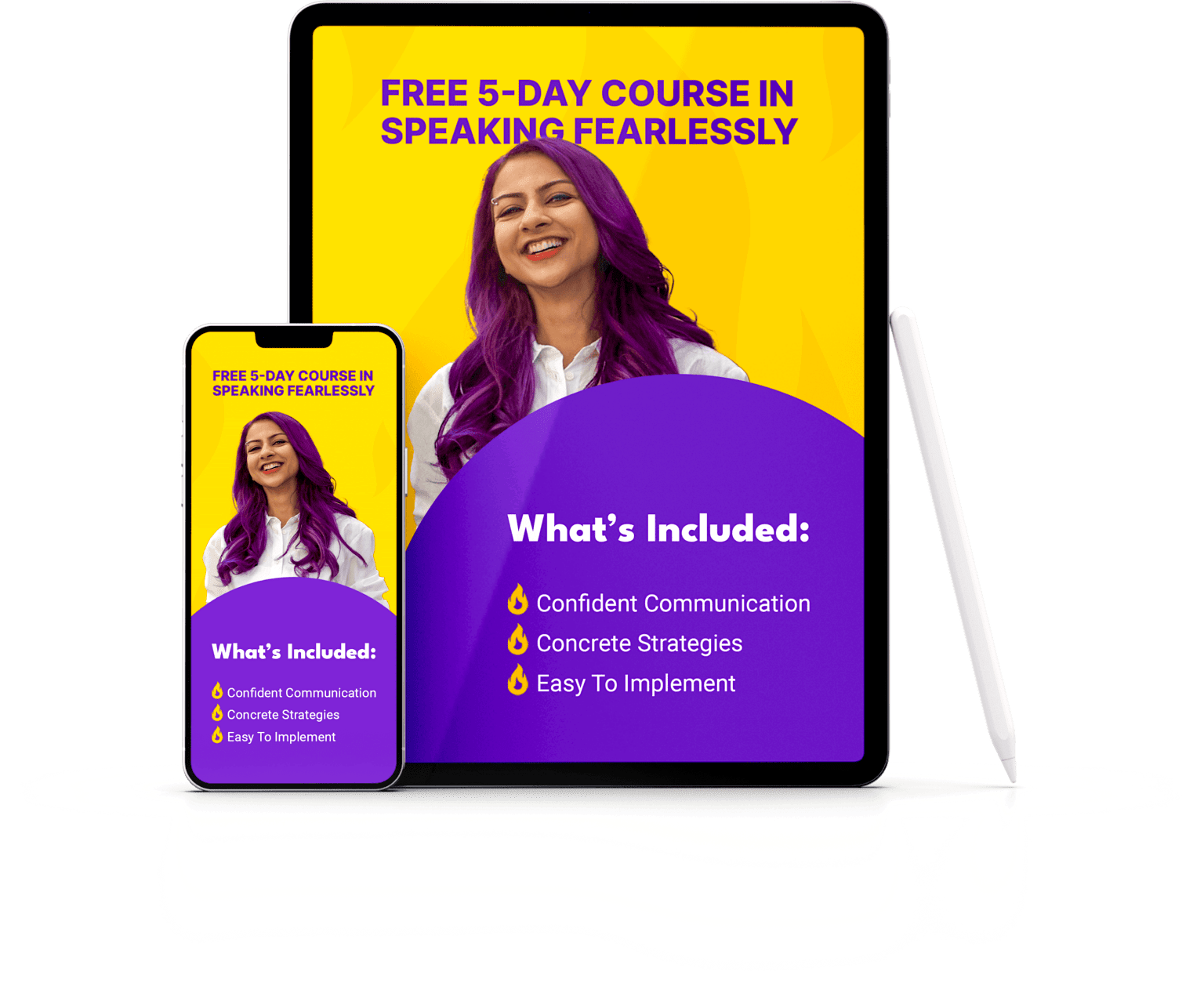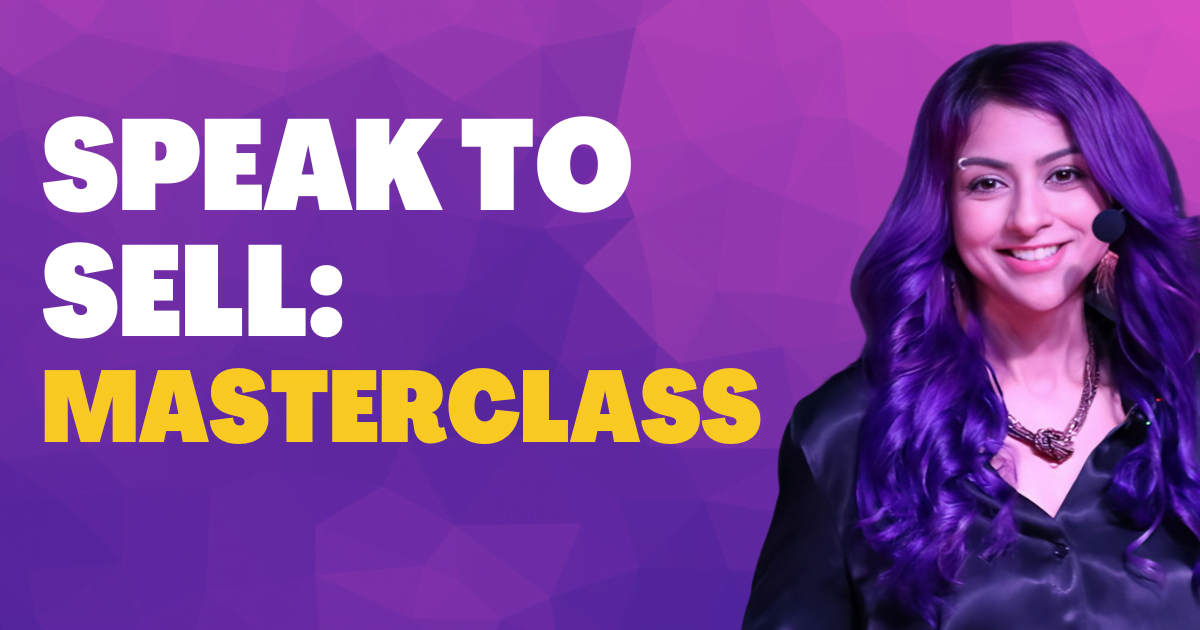If you’re an entrepreneur invested in building your personal brand and standing out from the competition, you can’t get too far with just writing content online. You have to be visible – you have to make videos.
When you create videos, your authority increases. Your audience creates a direct connection with you. And you learn strong speaking skills.
But a lot of entrepreneurs shy away from creating video content because it sounds too complicated. Or they create average videos that don’t get them any authority or credibility and might actually damage their brand.
I was a filmmaker for 7 years, directing commercials and documentaries for companies like Walmart, China’s Tencent and even Amazon Studios. And since then I’ve created hundreds of videos as an entrepreneur – along with creating official LinkedIn Learning courses on public speaking.

Nausheen in 2019 directing a film commercial in China
Here’s my zero-to-video guide for you as a busy entrepreneur. With this guide, you can create amazing quality videos, speak with impact and grow your business through growing your personal brand in 2024.
P.S. Want help with creating outstanding videos? Let’s talk.
Table of Contents
1. Why Creating Videos is Crucial for Entrepreneurs
Video content, when used effectively, dramatically increases your impact as a personal brand.
Videos make a deeper impact on your potential clients – and therefore on your business. That’s because when people see you speaking, they feel a sense of familiarity. You add to your credibility simply by showing up on a video and speaking about your area of expertise.
From brief, highly interactive Instagram stories to comprehensive YouTube tutorials, each variation of video offers an opportunity to enhance your brand awareness and drive sales.
Videos are also a highly engaging format. Higher engagement rates translate into higher dwell time, improved SEO rankings, and ultimately, higher customer conversions. This ripple effect set off by engaging video content is why creating video is no longer just an option; it’s a mandatory part of your content strategy in 2024.
2. Creating for your Target Audience
Identifying your target audience
Understanding your target audience acts as a groundwork upon which you build your video content. Who is your ideal audience? What are their current desires, challenges and needs?
Tailoring video content to meet audience needs
All audiences want to be inspired, entertained or informed. Make sure your content fulfills at least one of those three goals.
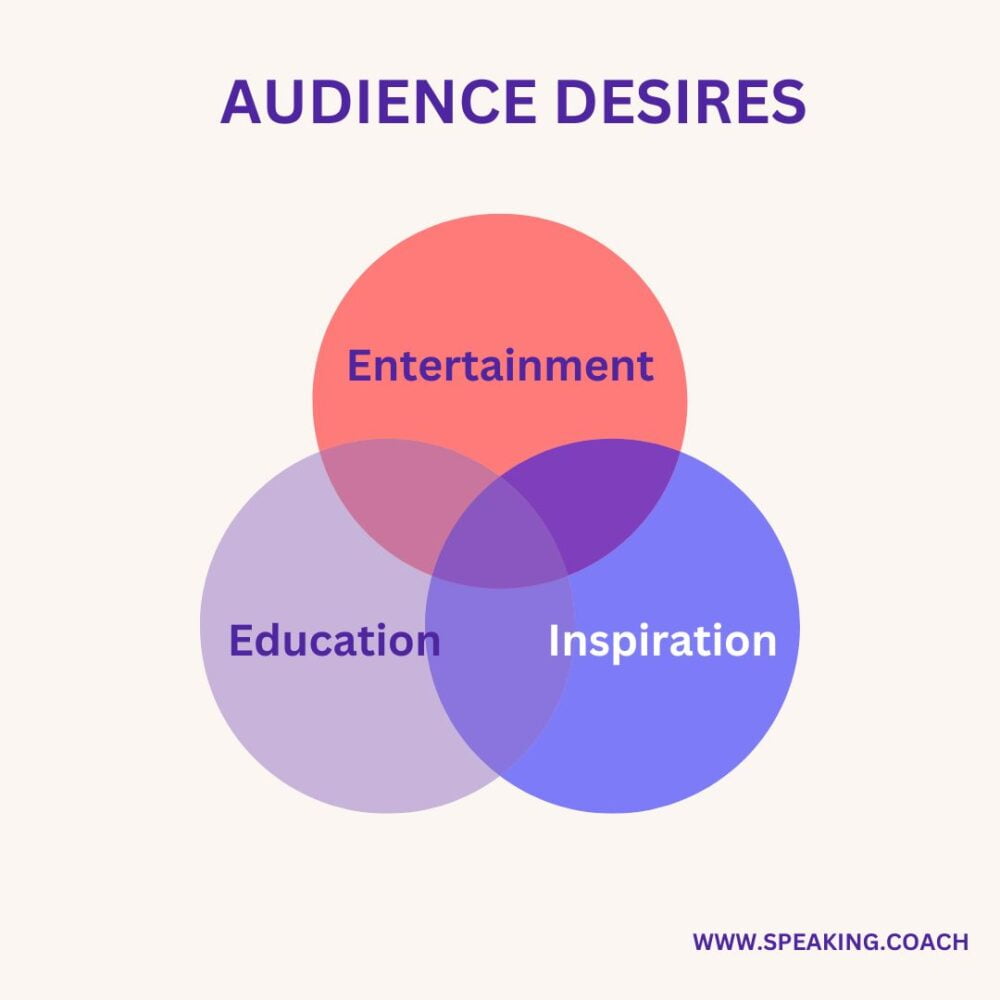
Knowing your audience also helps determine the type of content and tone that will be the most engaging—for example, professional, friendly, instructive, etc. Remember, the more you understand your target audience, the higher the likelihood of creating content that resonates with them.
3. Planning Your Video Content
Defining your video topics
Identify what you want to be known for. You could talk about a lot of things. But don’t. Talking about one thing consistently is what establishes your brand. This ONE thing should:
- Connect to your expertise.
- Show your point of view.
- Be something you can talk about in your sleep.
It should also be something your target audience really wants to know more about.
Set clear goals and objectives
Do you want to create videos to show authority and add to your thought leadership? Share opinions and points of view on current trends in your industry.
Want to show off your expertise and establish yourself as a go-to resource? Create videos demonstrating specific processes. Add customer testimonials talking about how great their experience was working with you.
Or do you want to create bottom-of-the funnel videos to drive sales? That way you can showcase your offers – using a problem-agitate-solution flow.
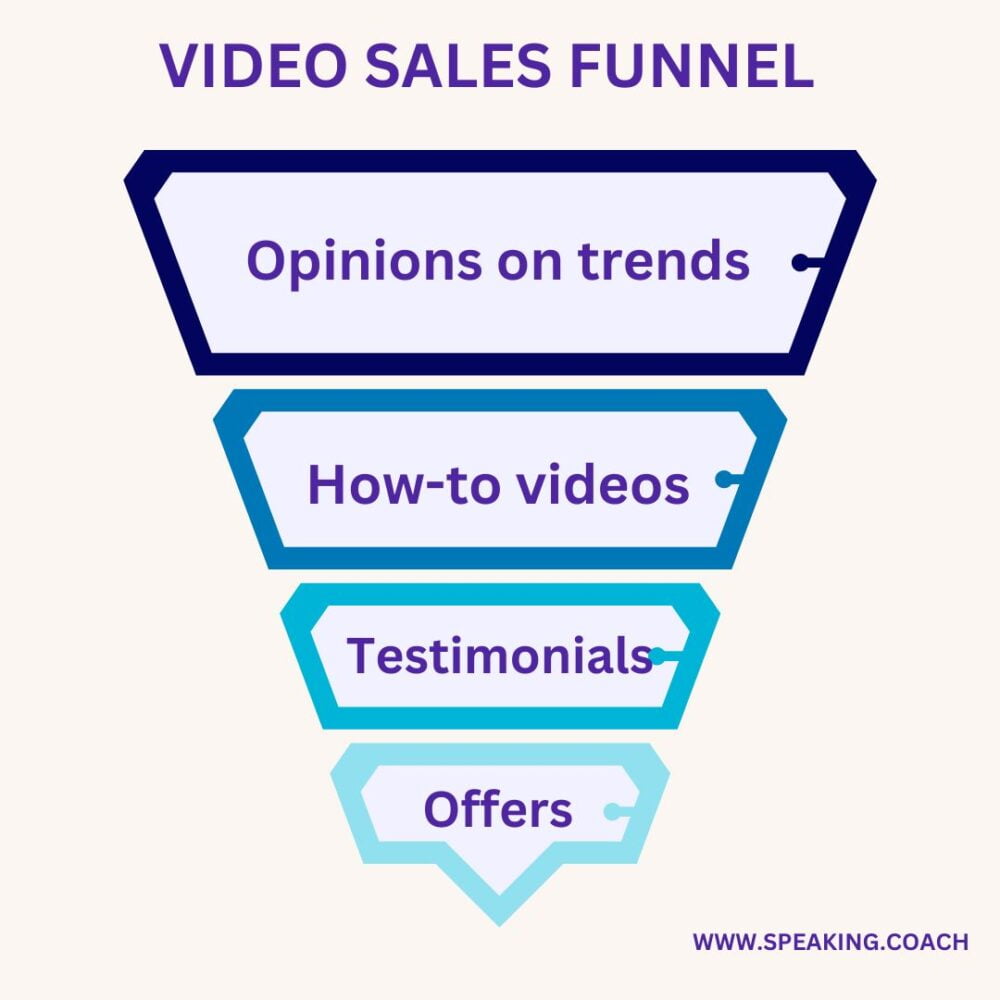
Choosing the right video formats for your business
Don’t get stuck with a single format because it seems to be the “obvious” choice.
You can choose between how-to videos, educational content, product demos, customer testimonials or behind-the-scenes footage. Link your intent to your video format- and explore several types of formats to see which one resonates better with your audience.
Regardless of the format chosen, you should package the video in a way that’s easy to consume and share. Keep videos short. Use strong hooks. Have relevant content, high-quality visuals and audio, good pacing, and a clear call to action at the end.
4. Crafting a Compelling Story
Writing engaging and concise video scripts
Here are three ways to write compelling scripts for your videos:
- One video = one idea.
Each video should be focused on a single idea. This is where a lot of entrepreneurs go wrong – they cram too much into a single video. But your audience will find it hard to keep up and relate if you create long, rambling videos. - Add personality.
Don’t be bland. (And please don’t get ChatGPT to write your video scripts – you will sound like a robot if you use them).
Add your sense of humor. Bring out your favorite quotes, references and pet phrases. Make sure that the video sounds like you – not someone delivering a lecture. - Keep a conversational tone.
The video should sound like you’re having a conversation with your audience – not like you’re announcing the news or selling something.
Pro-tip: Don’t script out your entire video. Write it in bullet points that you’ll flesh out as you articulate your thoughts on camera. Fully written-out scripts will make you sound like you’re reading them.
But complete improvisation without a script might make you ramble. Strike that balance between scripting the outline but speaking in a natural way to elaborate the key points when you speak.
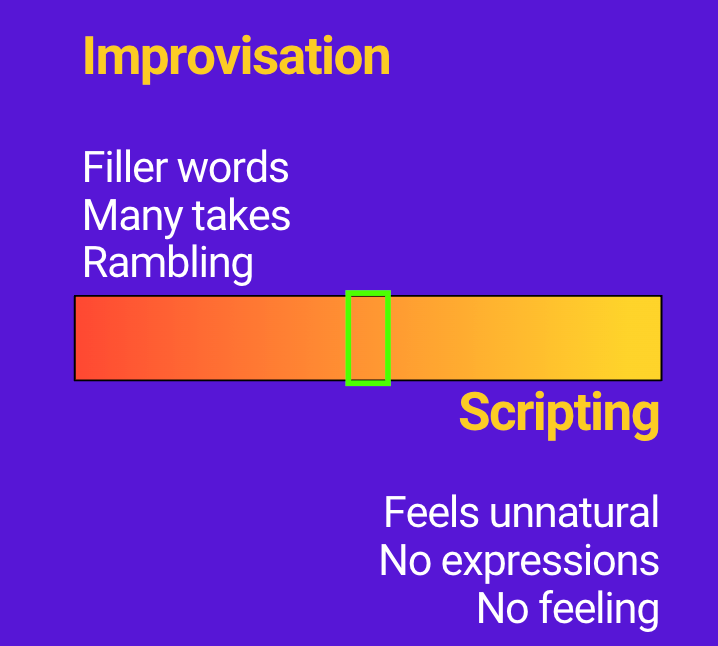
Tips for effective storytelling in business videos
Storytelling is at the heart of every captivating video content. Evolutionarily, we’re naturally attracted to well-told stories that evoke emotion, spark curiosity or provide relevant information. To craft such a story, start by having a clear purpose or message for your video. This should align with your brand and your audience’s interests.
You can create, curate and adapt stories.
Brainstorm on 5-7 stories related to the theme you want to talk about. Here are some common stories you can consider telling:
- Your origin story.
- Best client success story.
- One almost-failure story.
Follow the most tried-and-tested story structure when you tell your story:
- How things were in the past.
- The big problem.
- How you worked on it.
- Big transformative moment.
- Life after the transformation.
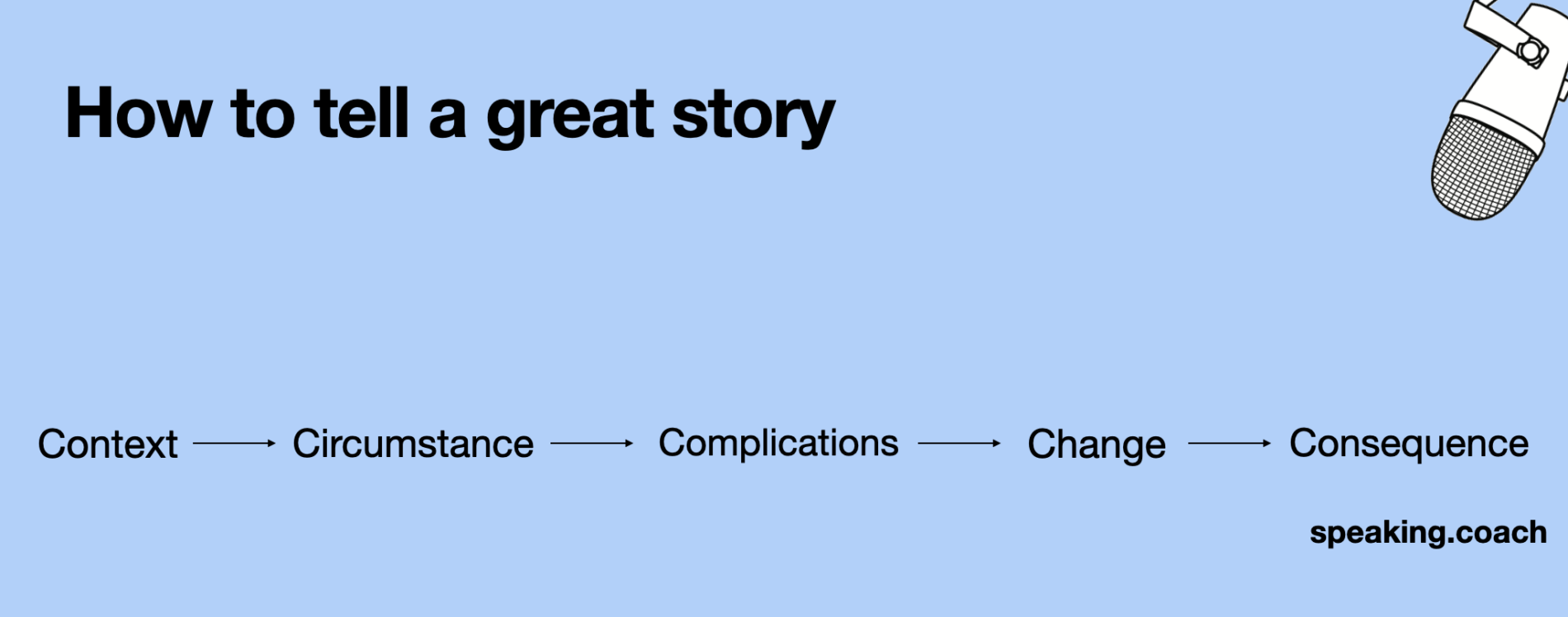
Pro-tip: Start writing down every single idea. Create an idea capture system. Capture ideas no matter where you are. Every Sunday, take your notes and create video outlines.
5. Essential Tools and Equipment
Just as you would not show up to a customer meeting dressed unkempt, your video should not have poor visuals and audio.
High-quality visuals make your videos stand out. They make people pay attention and think “wow that’s pro”. They help people understand and remember your message better. On the other hand, poor-quality visuals can cause your audience to question the professionalism and credibility of your brand (and business).
Similarly, high-quality sound is equally significant. It complements the visual elements and provides an immersive experience to the viewer. It’s fundamentally about ensuring your message is “seen” and “heard”. People might tolerate poor visuals but they don’t tolerate poor audio.
Overview of necessary video equipment
All you need to create great videos is:
- A good quality camera – your phone will work well.
- A tripod for a video in one place, or a stabilizer if possible for a walking video.
- An external microphone – this will elevate your videos to the pro level.
Budget-friendly options for entrepreneurs
You can use your phone – you don’t need a fancy camera.
I’d recommend using a tripod or phone stand to keep your phone stable.
If you want to invest in a camera, I’d recommend getting a mirrorless camera with interchangeable lenses like the Panasonic GH5 (that’s the one I use). This way you can film different kinds of shots with different lenses.
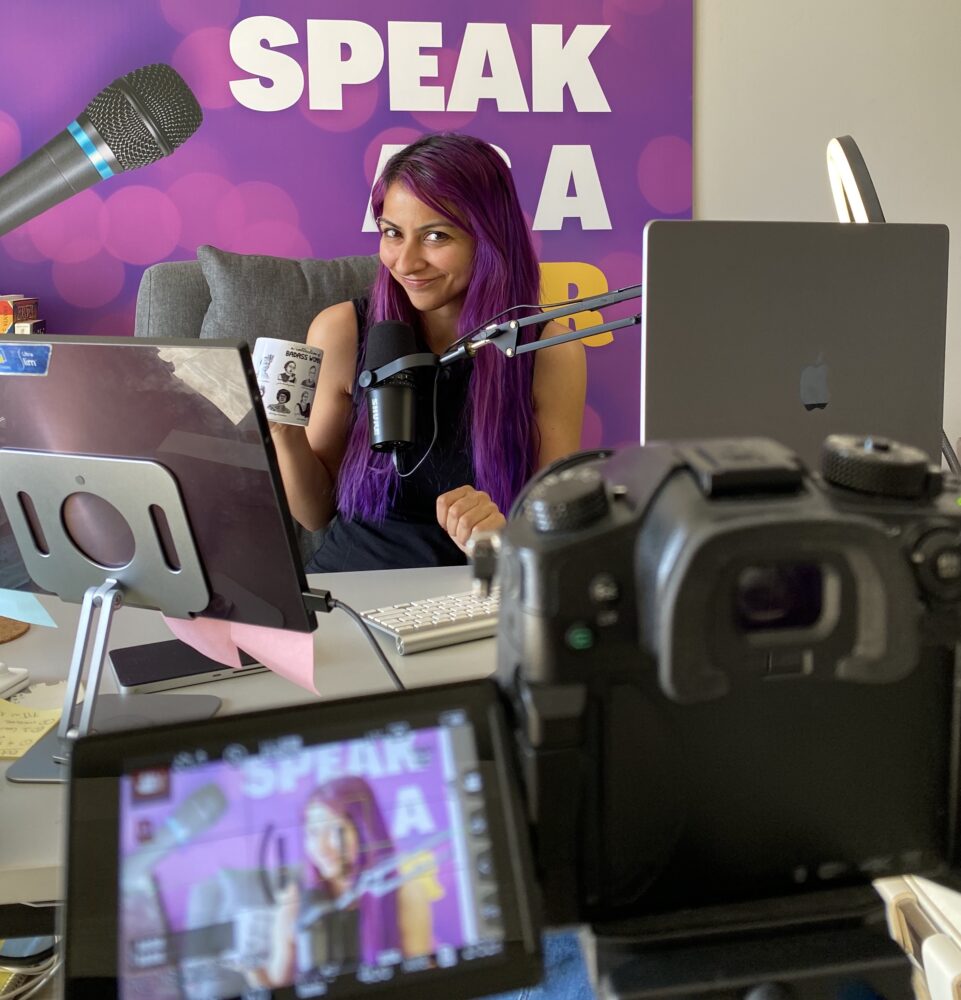
Lighting for professional-looking videos
Use natural lighting as much as possible – don’t have your back to your window and aim to film during the day.
You don’t need fancy lights to create a high quality video – you just need to understand how to use available lighting to create a clean, crisp, well-light video.
Pro-tip: Keep your window or main light source at a 45°angle instead of head-on. This will make sure you’re not washed out. If you want, use a ring light opposite it to fill in your shadows.

Audio
People will be ok with poor visuals. They will not tolerate bad audio.Your phone audio has echo. I highly recommend investing in a mic. The easiest choice: a collar mic.
Check out this article to see the kinds of mics you can get.
Camera angles
Keep your phone or camera at eye-level. Have your upper half in the frame. Look straight into the camera.
Background
Choose a background that’s not a blank wall but is neither too busy. You can also set up a backdrop like I did – it helps establish your branding.
Getting help
You can consider renting equipment or hiring a professional videographer if your budget allows.
6. Filming Techniques for Entrepreneurs
Mastering camera presence
“Nausheen! I hate watching myself on video. I don’t look like me. I don’t sound like me. Help!”
I often get this from clients who hate watching themselves back.
Here are 5 ways to be natural on camera:
1: Get in conversation mode
Imagine a friend on the other side of the lens. Talk in your normal conversational tone.
Some people use googly eyes (So you can make eye contact!). Others use stuffed animals. I like imagining my ideal client listening to me.
Pro-tip: You don’t need to project your voice. You’re not announcing or presenting. You’re just talking.
2: Turn off front view
Your face is distracting and it can be unnatural looking at it when you’re recording. Use the back camera so that you can focus on your performance.
You get a win-win: with the back camera, you’re less distracted by your face and you get higher quality videos.
3: Make the camera your friend
Change the way you think about your camera. It’s not the enemy. It’s purpose is not to show the ugly side of you. It’s your ally. You get to show your brand to the world.
4: Real talk before recording
Have a Zoom call right before you need to record or talk to a friend or partner. Your brain will get into conversation mode and you’ll warm up your voice.
5: No pressure
The more stress you feel, the more stress you show on camera. Aim to create a pleasant, low-stress environment when you film your videos. Grab a favorite drink. Treat yourself to chocolate.
Deliver a captivating performance
Work with your voice, energy and body language.
Modulate your pitch – you are more monotonous than you think! Be clear and intentional with your pronunciation and enunciation. Build in pauses. They let the audience think and give you time to breathe.
Amp up your energy: You can’t talk on camera with the same energy with which you tap away at that keyboard. Turn your energy up.
Your energy should be higher than a normal conversation but lower than an infomercial.
When you rehearse, understand where your video frame ends, so that you can have your hands visible in the frame. Use deliberate, controlled gestures to emphasize a point. Don’t be afraid of sometimes resting your hands.
Horizontal or vertical?
Use the vertical format for short form videos on most platforms including LinkedIn, YouTube shorts, Instagram and TikTok. Use horizontal format for videos longer than 2 minutes – to be used on YouTube or your own website.
How to batch-create videos
I recommend creating a repeatable process that’s as simple as possible. The idea is to get from idea to video as quickly as possible – and to create multiple videos in one sitting.
Aim to have your scripts ready and run through creating 4-5 videos in one go – that way you’re done with several weeks of content in a single filming session.
Pro-tip: Keep extra time to do more takes. It takes a few tries to warm up and get in the flow.
7. Editing and Post-Production
You have two options:
- You can use “pro” level software that’s less intuitive and user friendly but offers more options and flexibility – like Adobe Premiere Pro or DaVinci Resolve.
- You can use more consumer-friendly platforms like Descript.io, veed.io or capcut.com.
Whichever software you use, you don’t need fancy transitions and flying text. Just cut different parts of the video together in a way that flows well, is concise and doesn’t leave the audience bored or confused.
Pro-tip: Aim to keep your videos short initially – cut out rambling and anything that doesn’t contribute to progressing the narrative.
8. Optimizing Your Video for SEO
Lastly, you must ensure your video is optimized for search engines. This increases its visibility and improves ranking on search engine results pages.
Keywords unique to your industry, business, or topic should be included in the title, descriptions, and tags. Transcribing your video or providing subtitles can also improve your video’s SEO since this text is crawlable by search engines.
9. Leveraging Social Media Platforms
I post my videos on LinkedIn because that’s where I have the most active community. But once you create videos for one platform, leverage them across multiple channels.
Create shorter extracts from longer podcasts to be able to extend the life of the same material.
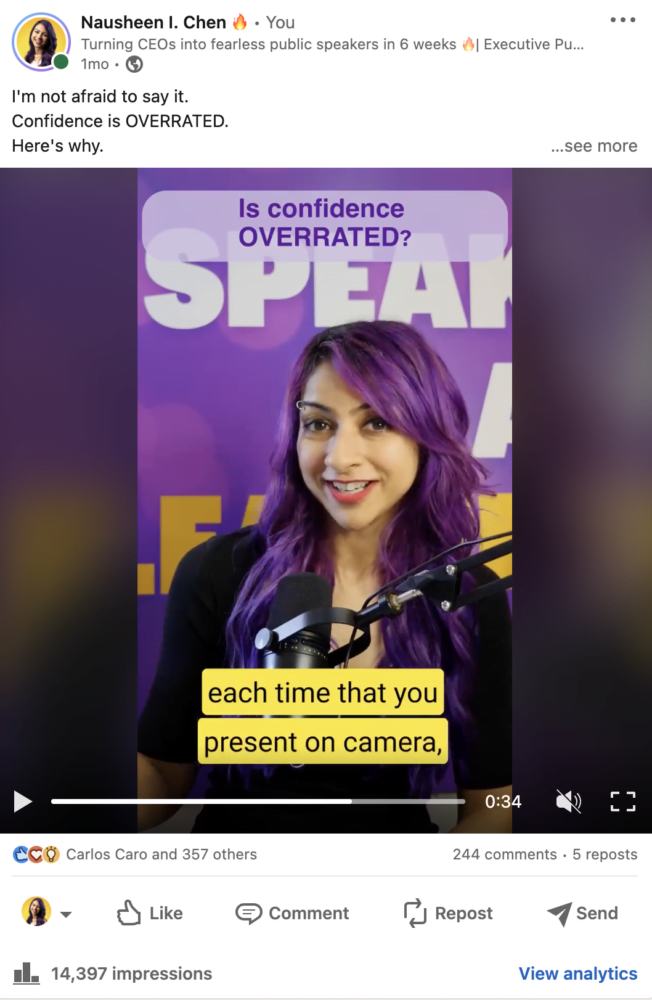
10. Measuring Success and Making Improvements
Analyzing video metrics
Analyze your videos for:
- Watch time
- Impressions
- Engagement (comments)
If you have high impressions but low watch time, improve your video intro and pacing (make them shorter and more concise). If you have high impressions but low engagement, ask the audience to engage – ask them questions and prompt them to respond in the comments.
Iterative improvements based on viewer feedback
Improve your next video based on the results of your past ones. You can also expand on ideas expressed in videos that have done well in the past – e.g. if a video containing 5 tips has done well, consider doing 5 separate videos, one on each of the tips.
11. Overcoming Common Challenges
Time management tips for video creation
The most common complain I hear from entrepreneurs when creating videos is that it takes too much time.
That’s because they don’t have a system for video creation. This is what I recommend:
- Same setup: Use the same background and video setup each time. (I keep my camera on a tripod all the time so I never need to set it up again).
- Batch-create: have scripts ready for 4-5 videos that you can film at a time. This way one video recording session can give you videos for a week or two at a time.
- Batch-edit: Edit your batch of videos in one go – and use similar editing techniques so you don’t need to reinvent the wheel with each edit.
Schedule regular time to record every 2-3 weeks – I recommend using a weekend so that you’re more relaxed.
Addressing common fears and concerns about video content
If you appear too stiff or robotic in your videos, aim to create a warm up routine before you start recording.
Plan out your last 5-7 minutes before going on camera:
- Physical warmups: jumping, bouncing.
- Vocal warmups: watch this video.
- Grab something refreshing to drink.

The best videos feel like the person is talking to you. Not at you. Think of your video as a dialogue, not a one way lecture.
Bonus: Innovative Video Content Ideas for Entrepreneurs
- Share your unique point of view through opinion videos.
- Tap into the heart of your business with behind-the-scenes footage.
- Demonstrate the value of your products and offers through informative videos.
- Boost your credibility with customer testimonial videos.
- Position yourself as an industry leader through educational videos.
Opinion Videos
Got a point of view on a trend or a common practice related to your industry? Create a video to show how you’re different from your competitors. These videos create a strong brand and help your community get a deeper look into how your brain – and your brand- works.
Behind-the-Scenes Videos
There’s a certain magic to peeling back the curtain and offering your community a glimpse into the unseen aspects of a business. Share your thoughts before or after an important meeting. Make a quick video when you’re on the train. Record your team planning out your strategy. Not only do behind-the-scenes videos humanize a brand, they foster a sense of connection by truly involving your audience in your story. It’s not just about showcasing who you are, but about extending an invitation for your community to be part of the process – truly building in public.
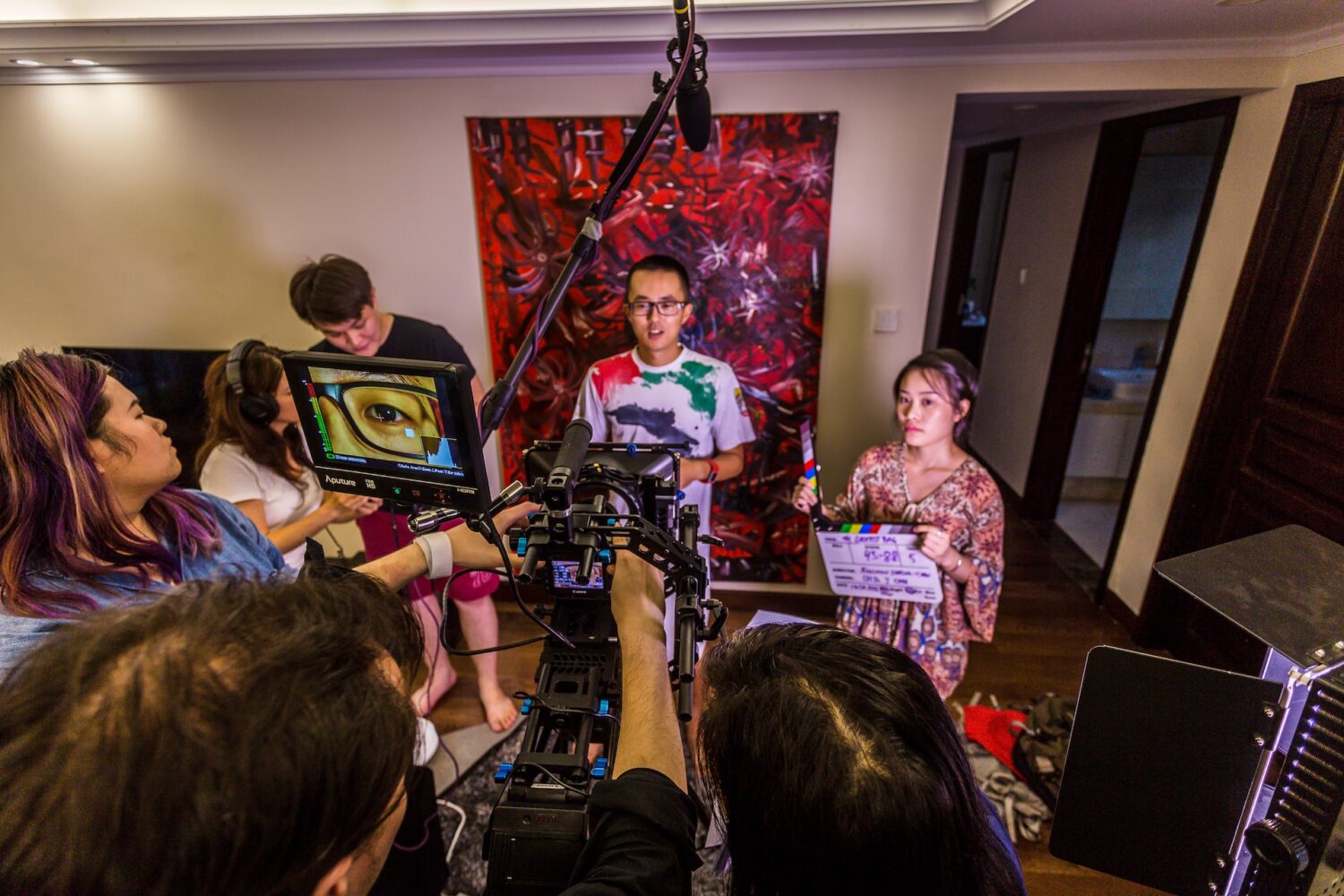
Product Demonstration Videos
This is an intentional move to discard the conventional sales pitch and replace it with a practical, visual experience. Show how your product – or offer or service works. Walk your audience through the process so that they feel like they know and understand your offer before they get on a call with you.
Customer Testimonial Videos
Trust. It holds immense weight when it comes to purchasing decisions. This is where customer testimonial videos come in handy. They show – beyond a doubt – how amazing you really are. We’re all more easily convinced of your awesomeness when someone else says you’re awesome – not just you. Testimonial videos underline the fact that you deliver on your promises, all while highlighting the functional advantages of your offer.
Educational or How-To Videos
If you are looking to establish authority in your industry, educational videos are your best bet. These videos serve two purposes – they provide value to your viewers and position you as an industry expert. From how-to videos to deep explorations of industry subject matters, educational videos offer actionable insights. This proactive engagement tactic is a great way to build thought leadership while attracting and retaining a loyal audience base.
Conclusion
Effective video content doesn’t require a Spielberg production budget or extensive industry knowledge. Entrepreneurship is about innovation and adapting your own voice. Implementing a strategic approach with defined goals, audience relevance, storytelling, keeping it short yet informative, and focusing on quality are crucial elements.
Videos not only help you resonate with your audience but also pave the way for long-term client relationships and sustainable business growth. Being on camera is super powerful. Your clients will feel like they know you before they even talk to you. Don’t let your fear of the camera stop you from using this powerful way to build your brand.
If you’re still hesitating on creating videos to elevate your brand, let’s talk.

